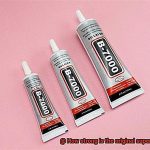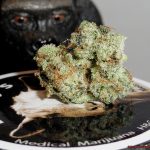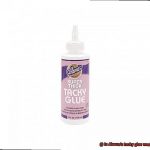In the vast realm of scientific breakthroughs, there are tales that defy logic and leave us in awe. One such tale is the accidental discovery of Super Glue, a gripping story filled with unexpected twists and turns. Prepare to be captivated as we dive into the extraordinary account of how a momentary mishap in a lab led to the creation of one of the world’s most powerful adhesives. It’s a tale of innovation, persistence, and yes, even a dash of frustration turned triumph. So join us on this journey as we uncover how an unintended blunder forever changed the way we stick things together.
History of Super Glue
Contents
- 1 History of Super Glue
- 2 The Accidental Discovery of Super Glue
- 3 Dr. Harry Coover and His Role in the Discovery
- 4 The Impact of the Discovery on Adhesives Technology
- 5 Uses for Super Glue
- 6 Benefits of Using Super Glue
- 7 Disadvantages of Using Super Glue
- 8 Safety Considerations When Using Super Glue
- 9 Conclusion
Glue, a seemingly ordinary and unremarkable substance, has a history filled with serendipitous surprises. Take Super Glue, for example. This ubiquitous and versatile adhesive was actually stumbled upon by accident. In 1942, the brilliant chemist Dr. Harry Coover was diligently working at Eastman Kodak Company, striving to develop a clear plastic for gun sights during the tumultuous years of World War II. Little did he know that his experiment would lead to an extraordinary discovery.
Dr. Coover and his team were immersed in a world of test tubes and chemical compositions, exploring the uncharted territories of adhesive possibilities. During their arduous journey, they chanced upon a substance with mesmerizing adhesive properties. This remarkable substance possessed an unprecedented strength and bonded in the blink of an eye when exposed to moisture. However, blinded by their initial objective, they dismissed this accidental breakthrough as a failure.
Years later, fate intervened and Dr. Coover rediscovered this adhesive wonder while working on a new project. Suddenly struck by its incredible bonding capabilities, he realized its potential value. In 1951, he filed a patent for this revolutionary adhesive, which would later be commercially known as Super Glue.
The first field to benefit from the miraculous properties of Super Glue was medicine. Its rapid bonding abilities and effective wound sealing capabilities revolutionized surgical procedures. Doctors could now close wounds swiftly and efficiently without resorting to traditional sutures, reducing both time and discomfort for patients.
As word spread about the astonishing adhesive qualities of Super Glue, its popularity soared to new heights. It found applications in various industries, including electronics, automotive manufacturing, and household repairs. Today, Super Glue is an indispensable tool in almost every toolbox, trusted by professionals and DIY enthusiasts around the world.
What sets Super Glue apart from other adhesives? Its ability to bond almost instantly upon contact with moisture makes it ideal for quick repairs and projects that demand immediate adhesion. Moreover, it forms an unyielding bond between disparate materials like metal, plastic, wood, and even skin.
Nevertheless, caution must be exercised when handling Super Glue. Its prodigious adhesive prowess can inadvertently bond skin together if not used with care. In the event of a sticky situation (pun intended), there is no need to panic. Simply soaking the bonded area in warm soapy water or employing an acetone-based nail polish remover can help loosen the unwelcome grip.
The Accidental Discovery of Super Glue
In the realm of unexpected discoveries, few can rival the accidental invention of Super Glue by Dr. Harry Coover. What began as a quest to develop clear plastic gun sights during World War II led Coover to stumble upon an adhesive with extraordinary properties. This serendipitous event would eventually pave the way for Super Glue’s popularization and widespread availability to consumers.
The Sticky Situation:
In 1942, Dr. Coover and his team embarked on a project to find an adhesive that could bond clear plastic to metal for use in manufacturing clear plastic gun sights. They turned their attention to a group of substances called cyanoacrylates, which had been developed by Kodak scientists in the 1940s. These cyanoacrylates showed promise, but they were far too sticky and challenging to work with, rendering them unsuitable for their intended purpose.
The Forgotten Revelation:
Undeterred by this setback, Coover moved on to other projects, temporarily forgetting about the sticky cyanoacrylates. However, fate had other plans in store for him. Several years later, while working at Eastman Kodak’s chemical laboratory, he stumbled upon his forgotten revelation.
The Remarkable Bonding Abilities:
Dr. Coover and his team were experimenting with materials for a heat-resistant coating for jet canopies when they rediscovered the exceptional properties of cyanoacrylates. They found that these substances polymerized rapidly in the presence of water vapor, forming an incredibly strong and durable bond. This remarkable bonding ability was unlike anything they had seen before.
From Failure to Success:
Recognizing the immense potential of cyanoacrylates as an adhesive, Coover patented his discovery in 1951 and marketed it as “Eastman #910 Adhesive.” However, it wasn’t until 1958, when it was rebranded as “Super Glue,” that it gained significant popularity and became widely available to consumers. The new name captured the adhesive’s superlative bonding abilities and struck a chord with the public.
The Impact:
The introduction of Super Glue revolutionized the adhesive industry. Its versatility made it an indispensable tool in various industries, including medicine, electronics, and crafts. From mending broken toys to repairing shattered ceramics, Super Glue has become a reliable go-to adhesive for countless individuals worldwide. Its ability to create strong bonds quickly and effectively has made it a staple in households and professional settings alike.
Dr. Harry Coover and His Role in the Discovery
Well, it all started with the accidental discovery of Super Glue by Dr. Harry Coover, a brilliant American chemist. In this blog post, we will delve into Dr. Coover’s journey and explore how his accidental invention shaped the adhesive industry.
The Journey Begins: A Brilliant Chemist
Dr. Harry Coover was not just an ordinary chemist. With his Bachelor’s degree in chemistry from Hobart College and a Ph.D. in organic chemistry from Cornell University, he had the knowledge and passion to make significant contributions to the scientific world.
Unintended Consequences: The Accidental Discovery
During World War II, Coover was working on a project to develop a clear plastic for gun sights. Little did he know that this project would take an unexpected turn. While experimenting with cyanoacrylates, Coover stumbled upon their remarkable adhesive properties by accident.
From Frustration to Breakthrough
At first, Coover’s discovery seemed more like a frustration than a breakthrough. The adhesive stuck to everything it touched, including lab equipment and even Coover’s own fingers. However, Coover recognized the potential of this accidental discovery and saw it as an opportunity to create something extraordinary.
Refining the Adhesive
Coover and his team worked tirelessly to refine the adhesive over the next few years. They developed different formulations with varying viscosities to cater to different industrial needs. This dedication and perseverance paved the way for the commercial success of Super Glue.
Commercial Success and Impact
In 1958, Super Glue was introduced to the market by Eastman Kodak Company. Initially marketed as a surgical adhesive, it quickly gained popularity among consumers due to its incredible bonding strength and quick setting time. Super Glue revolutionized how people repaired and assembled various objects, from everyday household items to intricate automotive parts.
Recognition and Legacy
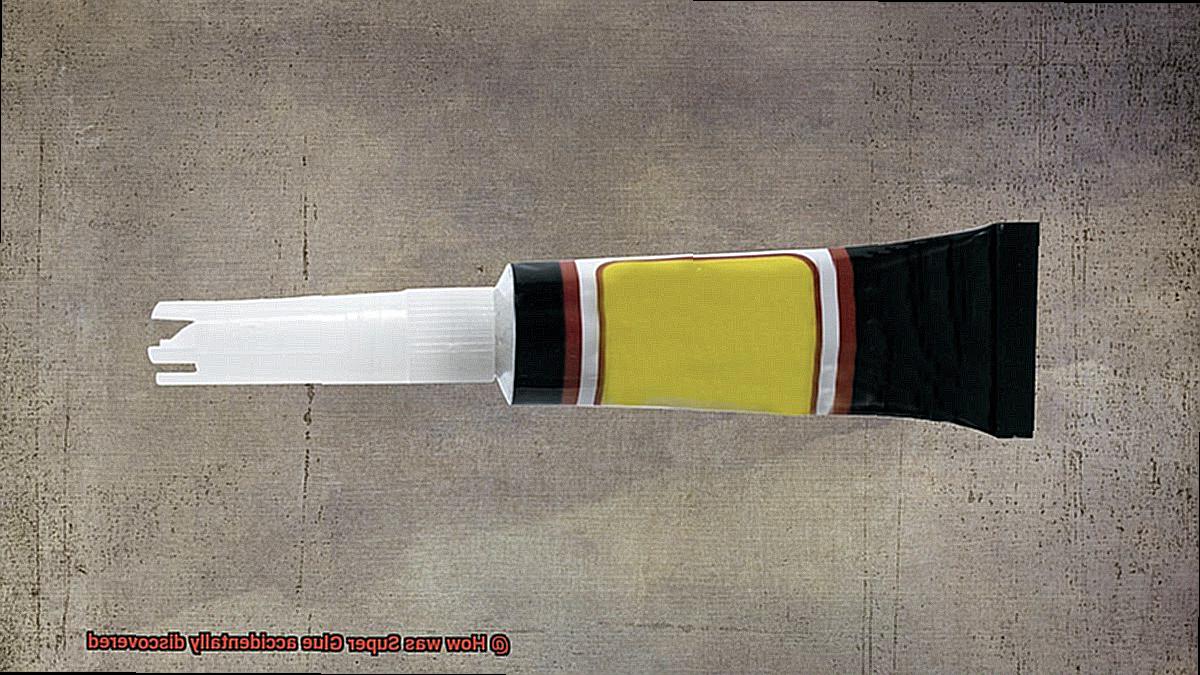
Dr. Harry Coover’s accidental discovery of Super Glue earned him numerous accolades and recognition. In 2004, he was awarded the National Medal of Technology and Innovation for his significant contributions to the field of chemistry. His invention continues to impact various industries, proving that sometimes the most groundbreaking discoveries come from unexpected places.
The Impact of the Discovery on Adhesives Technology
Glue is often taken for granted, but one accidental discovery changed the game in the adhesives industry forever. In this blog post, we will explore the profound impact of Super Glue on adhesives technology and how it revolutionized the way we bond materials together.
Instant Bonding: A Game-Changer
Traditional adhesives required hours or even days to dry and set, causing delays in various industries. Super Glue offered instant bonding upon contact, significantly enhancing efficiency and productivity in sectors where quick bonding was crucial.
Unmatched Strength and Durability
Super Glue showcased exceptional strength and resilience, unlike traditional adhesives. It could bond a wide range of materials with remarkable strength, including metals, plastics, ceramics, and glass. This made it invaluable for industries like automotive, aerospace, and construction that required reliable bonding solutions.
Super Glue for Everyone
Super Glue’s availability for consumer use opened up a world of possibilities. It became a popular choice for household repairs and DIY projects due to its fast bonding properties. Fixing broken items or creating crafts became easier than ever before.
Sparking Innovation
The discovery of Super Glue inspired further research and innovation in adhesives technology. Scientists and engineers experimented with different formulations and variations of cyanoacrylate adhesives. Specialized variants like gel-based Super Glue for vertical applications or flexible adhesives for bonding materials with different expansion rates emerged.
A Shift in Mindset
Super Glue’s success demonstrated the potential of accidental discoveries and the importance of exploring new avenues in research and development. This mindset encouraged scientists and engineers to think outside the box and pursue innovative approaches to adhesive technology.
Uses for Super Glue
In a world where materials often refuse to cooperate, one adhesive emerged from the shadows to save the day. Super Glue, also known as cyanoacrylate adhesive, has become a household name for its exceptional bonding prowess.
But did you know that this adhesive superhero has a hidden talent for crafting, household repairs, automotive wizardry, medical miracles, art restoration, and even electronic wizardry? Join us on an extraordinary journey through the many uses of Super Glue and discover how it has become an indispensable tool in various industries and everyday life.
Crafting and DIY Projects:
Enter the realm of crafting and DIY projects, and behold the secret weapon wielded by crafters and enthusiasts alike – Super Glue. With its unrivaled ability to bond various materials together, from wood and metal to plastic and fabric, this adhesive superstar ensures a strong and enduring union that withstands the test of time.
Whether you’re creating intricate jewelry pieces, building models with precision, or fashioning unique home decor, Super Glue guarantees a bond that will not be broken.
Household Repairs:
When disaster strikes in your home, fear not. For in your arsenal lies the ultimate fix-it solution – Super Glue. From mending shattered ceramics and fragile glassware to resurrecting electronic devices from their untimely demise, Super Glue’s quick-drying properties and unmatched bonding strength make it the go-to adhesive for all your household repair needs.
No longer shall you lament over broken heirlooms or discarded gadgets; Super Glue is here to mend what was once broken.

Automotive Wizardry:
In the fast-paced world of automobiles, where every second counts, Super Glue stands as a trusted ally. It possesses the power to secure loose trim pieces with unwavering strength, repair cracked dashboards to their former glory, and even fix minor leaks that threaten to derail your journey. With its ability to provide instant results, Super Glue is the steadfast companion that keeps you on the road without skipping a beat.
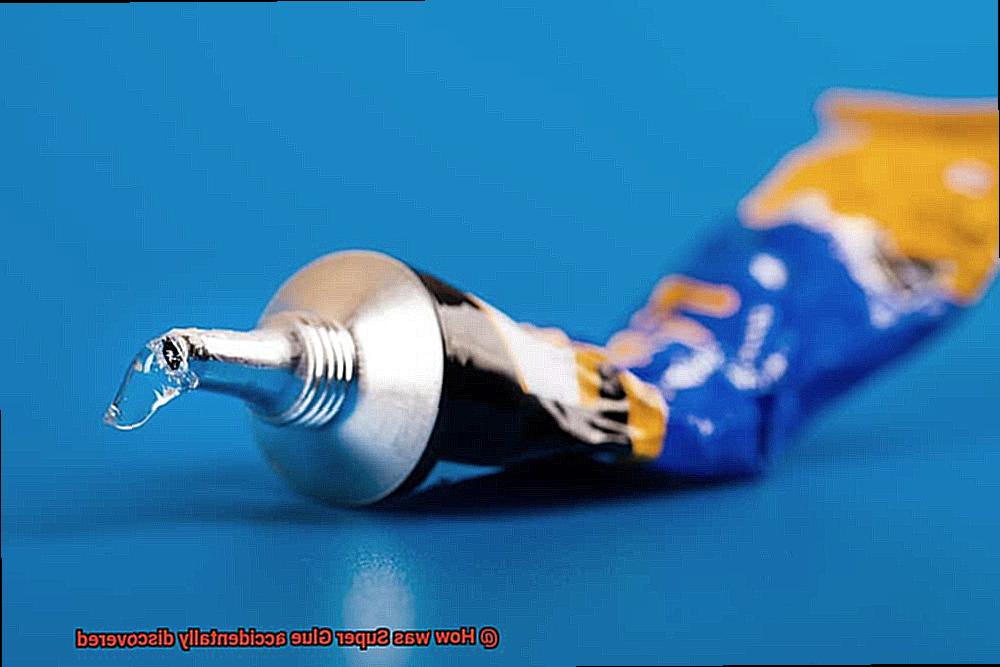
Medical Miracles:
From the battlefield to the operating room, Super Glue has journeyed into the realm of medicine, leaving a trail of miracles in its wake. Originally used by surgeons during World War II to swiftly close wounds, this adhesive wonder has revolutionized certain surgical procedures. Acting as a substitute for traditional sutures, Super Glue’s precision bonding capabilities seal small incisions with ease. Furthermore, it can bond dental crowns or bridges with steadfast reliability, making it an invaluable asset in the world of medicine.
Benefits of Using Super Glue
Super Glue, the adhesive superhero, is here to save the day in all your crafting, repairs, and DIY projects. With its strong bonding capabilities and quick-drying nature, Super Glue is a must-have tool for any project enthusiast.
One of the major benefits of using Super Glue is its quick-drying nature. Unlike other adhesives that take hours or even days to fully cure, Super Glue bonds surfaces together in a matter of seconds. This is perfect for those times when you need to quickly repair something or when time is of the essence.
Versatility is another advantage of Super Glue. It can bond a variety of materials including metal, plastic, wood, ceramics, and even some fabrics. This means you can use it for numerous DIY projects or repairs around the house. From fixing broken jewelry to repairing household items, Super Glue has got you covered.
Durability and strength are key benefits of using Super Glue. Once cured, it creates a strong and permanent bond that can withstand heavy loads and vibrations. So whether you’re fixing a broken chair or building a model airplane, you can trust that Super Glue will hold everything together.
Super Glue is also resistant to temperature changes and moisture, making it suitable for both indoor and outdoor use. It can withstand extreme temperatures without losing its bonding properties, ensuring that your repairs or projects stay intact regardless of the environment.
Precision is another advantage of using Super Glue. Its thin consistency allows for precise application, making it ideal for delicate tasks such as jewelry repair or model building. And the best part? It dries clear, leaving no visible traces of adhesive on the bonded surfaces. So your crafts and repairs will look seamless and professional.
Not only does Super Glue have a long shelf life when stored properly, but it also comes in small and convenient packaging. This makes it easy to carry around and use whenever and wherever needed. Its portability and ease of use make it a go-to adhesive for many people.
Disadvantages of Using Super Glue
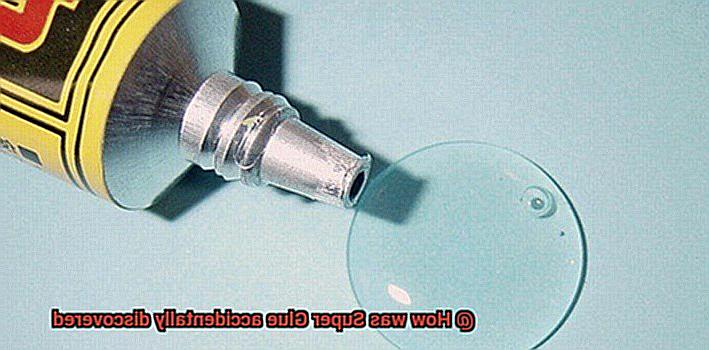
Super glue may seem like the perfect solution for all your bonding needs, but it’s important to know that even superheroes have their weaknesses. In this article, we will explore the disadvantages of using super glue, shedding light on its limitations and potential drawbacks. So, before you reach for that trusty bottle of super glue, let’s dive into the not-so-super side of this adhesive powerhouse.
Difficult to Remove:
Super glue’s incredible strength is both a blessing and a curse. While it’s fantastic for keeping things together, it becomes a nightmare when you accidentally glue your fingers together or attach an object to the wrong surface. Separating them without causing damage can be a real challenge.
Limited Compatibility:
Super glue is not suitable for all materials. Certain plastics, rubber, and metal surfaces may not bond well with it. This limited compatibility can restrict its usefulness in various applications and force you to seek alternative adhesives.
Degrades Over Time:
Once the bottle is opened, super glue starts to dry out, making it less effective over time. Exposure to air or moisture can further diminish its adhesive strength, rendering it useless for future projects.
Quick Setting Time:
Super glue’s quick-drying nature is both a blessing and a curse. While it allows for instant bonding, it leaves little room for adjustment or repositioning. This can be inconvenient when trying to align or fit parts together accurately.
Irritating Fumes:
Super glue releases fumes that can irritate the eyes, nose, and throat. It’s crucial to use this adhesive in a well-ventilated area to minimize inhalation and potential discomfort.
Skin Irritation:
Accidental contact with super glue on the skin can cause irritation and mild burns or allergic reactions for some individuals. Proper handling and avoiding direct skin contact are essential to prevent any adverse effects.
Unsuitable for Flexible Materials:
Super glue’s rigid bond is not suitable for flexible materials or joints that require movement. It can become brittle and may crack or break under stress, limiting its use in certain applications.
Challenging Removal:
Removing super glue from surfaces can be a daunting task. It often requires specialized solvents or techniques, which can potentially damage the material or leave behind unsightly residue.
Not Suitable for High Temperatures:
Super glue is not recommended for high-temperature applications as it can melt or lose its adhesive properties when exposed to heat. This limitation restricts its usefulness in certain industries and projects.

Voiding Warranties:
Using super glue on certain products or materials may void warranties. Manufacturers often have specific guidelines on the type of adhesive to be used, and deviating from these recommendations could lead to invalidated warranties.
Safety Considerations When Using Super Glue
When it comes to using super glue, safety should be your number one priority. This powerful adhesive may be a superhero when it comes to fixing broken items, but it can also pose some risks if not handled with caution. So, here are some important safety considerations to keep in mind when working with super glue:
First and foremost, let’s talk about skin contact. Super glue has the power to bond skin together faster than you can say “oops.” If you find yourself in this sticky situation, don’t panic and forcefully pull your skin apart. Instead, soak the affected area in warm soapy water and gently pry the skin apart with a soft cloth or cotton swab.
Now, let’s focus on protecting those precious peepers. Super glue can cause serious eye irritation and damage if it gets in your eyes. So, put on your safety goggles or glasses when working with super glue, especially if there’s a chance of splashing or accidental contact.
Ventilation is another crucial consideration. The fumes emitted by super glue can irritate your respiratory system or trigger allergies. You definitely don’t want that. Ensure that you work in a well-ventilated area or use a fan to keep that fresh air flowing.
Oh, and let’s not forget about the little ones and furry friends. Keep super glue out of their reach because ingesting it or applying it to sensitive areas like their mouths or noses can be harmful. Store it in a secure location where curious hands or paws can’t get to it.
Now, let’s tidy up our workspace. A clean and organized environment helps prevent accidental spills or drips onto unintended surfaces. We definitely don’t want to bond things together unintentionally or cause any damage.
Lastly, but certainly not least, read and follow the manufacturer’s instructions and safety guidelines. Each brand of super glue may have its quirks, so make sure you know how to use it properly.
d7MvvlABBcQ” >
Conclusion
The accidental discovery of Super Glue is a fascinating tale that showcases the unpredictable nature of scientific breakthroughs. In a laboratory at Eastman Kodak Company in 1942, Dr. Harry Coover and his team were attempting to create clear plastic gun sights for World War II soldiers. Little did they know that their experiment would lead to the creation of one of the most powerful adhesives known to man.
During their research, Dr. Coover and his colleagues stumbled upon a substance called cyanoacrylate. Initially, they dismissed it as a failure because it was too sticky and difficult to work with. However, years later, while searching for an adhesive to bond aircraft canopies during the Vietnam War, Dr. Coover revisited cyanoacrylate and realized its true potential.
In a stroke of serendipity, Dr. Coover discovered that when cyanoacrylate came into contact with trace amounts of moisture, it rapidly polymerized and formed an incredibly strong bond. This revelation led to the development of what we now know as Super Glue.
The accidental nature of this discovery highlights the importance of open-mindedness in scientific research. Sometimes, unexpected results can lead to groundbreaking innovations. It also serves as a reminder that success often comes from perseverance and not being afraid to revisit past failures.
Today, Super Glue is used in various industries ranging from aerospace engineering to medicine. Its ability to bond almost any material quickly and securely has made it an indispensable tool for professionals and DIY enthusiasts alike.
In conclusion, the accidental discovery of Super Glue by Dr. Harry Coover and his team is a testament to the power of curiosity and experimentation in scientific endeavors. It reminds us that sometimes the greatest discoveries are found when we least expect them, lurking within our failures and mistakes.


